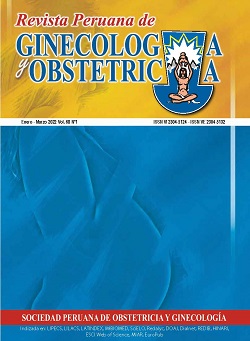Oophorosalpingectomy during hysterectomy in patients with benign uterine pathology
DOI:
https://doi.org/10.31403/rpgo.v68i2386Keywords:
Histerectomy, Ovarian neoplasms, prevention & controlAbstract
Hysterectomy is the most common surgical procedure in gynecological practice. During the operation, surgeons are faced with the decision whether or not to preserve the Fallopian tube and ovaries. In many cases, oophorosalpingectomy is performed simultaneously with hysterectomy in order to prevent the development of ovarian neoplasms, especially high-grade serous ovarian carcinoma. This decision is important in view of the benefits and risks associated with resection of ovaries that may retain some hormonal activity after natural menopause. The risk of developing malignancies is low in the general population, while potential effects of ovarian cessation include increased cardiovascular, psychological and bone complications. Patients with BRCA1 and BRCA2 mutations may benefit from oophorosalpingectomy. However, the oncologic safety of this approach is still under evaluation and is not recommended outside the current protocol. The objective of this review was to evaluate the controversies surrounding oophorosalpingectomy during hysterectomy in patients with benign uterine pathology.
Downloads
Downloads
Published
How to Cite
Issue
Section
License
Copyright (c) 2022 Eduardo Reyna-Villasmil

This work is licensed under a Creative Commons Attribution 4.0 International License.
Esta revista provee acceso libre inmediato a su contenido bajo el principio de que hacer disponible gratuitamente la investigación al publico, lo cual fomenta un mayor intercambio de conocimiento global.















